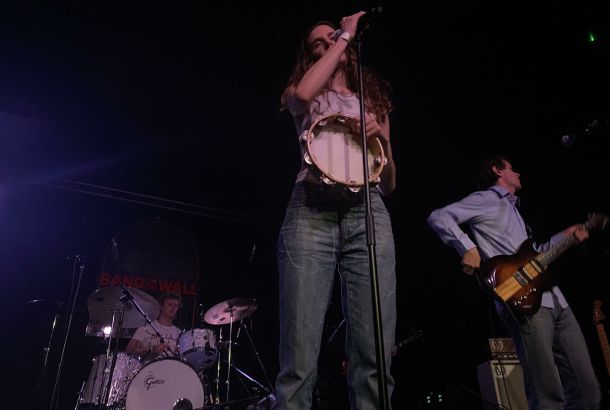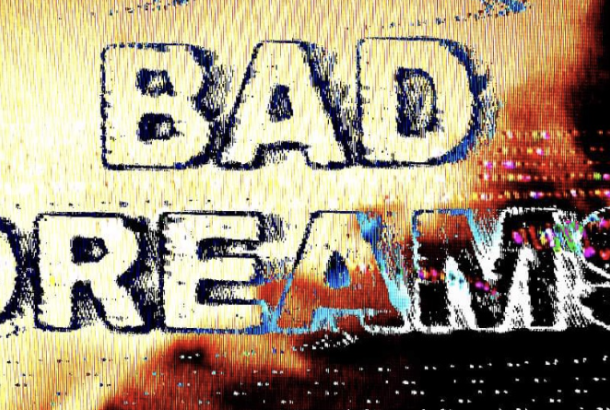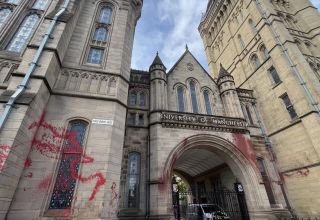Taylor Swift’s The Tortured Poets Department: The New Testament (Taylor’s Version)
By beapengelly

Taylor Swift’s The Tortured Poets Department is a sizeable collection of songs. That may be to its detriment for some, for others it is reason for mastery. With all its anticipated (and delivered) heartbreak, Swift unpacks her musical past-lives, spinning webs of tortured poetry along the charts. It doesn’t strike as the album the general pop consumer wanted, but to the committed listener, and her immense fanbase, this is Biblical.
‘Fortnight’, the album’s lead single and collaboration with Post Malone, introduces us to the album’s un-sunny disposition. From there the standard album journeys through a landscape of synth-pop, designed to go seamlessly from the title-tracks crystallised indie, to ‘My Boy Only Breaks His Favorite Toys’ and ‘Down Bad’s stronger pop hooks, to the perilously-depressed-but-trying-to-be-ok-about-it ‘I Can Do It With A Broken Heart’. A heavier country influence than Midnights prevails through this album. ‘But Daddy I Love Him’ feels like an indie-tinged afterlife of Swift’s earlier pop-country sound, as she reanimates her youthful, enchanted idealism. ‘Guilty As Sin’ is dreamy too, but there’s enough dark-academia-tinged dark-country and miserable hymns of remembrance to stop too much light.
Swift is not afraid to break the fourth wall or crack jokes in her songs. It might be a wordy, intimidatingly detailed album but these kind of signposts of relatability make it easier to want to stick with it, and when you do, it gets really good. The title track initially seemed a wash of Swift’s most detailed songwriting, mixed with the controversial (but honestly valid) Charlie Puth lyric (She’s not wrong – the man writes genius hooks!). It is difficult to approach, but once you take the time, it might be one of her best.
However, The Anthology extension to the album solidifies its status as holy work. Here Swift has accepted her pandemic persona and wholly allowed her to flourish on these last tracks. The surprise fifteen songs are a breath of Folklorian air, some dream-pop musing on youthful romance in ‘So High School’ and artisan Americana ballads like ‘The Albatross’ or ‘The Prophecy’. Swift is back in the forest spinning expert stories in soft indie folk, somewhere people have been begging her to go since Evermore. When the synth pop bleeds into woodland Americana, The Anthology takes The Tortured Poets Department to what seems an untouchable place.
It might be the second coming of Red. The pervasive heartbreak woven into every tune and the transparency with which she writes tap back into Red’s brutality of feeling. Once again we find Swift ripped open for public consumption. The Tortured Poets Department opens to the same introspection, but in a shiny Midnights-casing that gives way to warm, mossy folk. The new adult edge counter to Red’s angry bite. There is anger in this album, but it comes sitting in its own pain, its own cloud of densely heartsick lyricism.
It is admittedly unbalanced in sound, but the glimpses of light and softer introspection in ‘The Alchemy’ and ‘Clara Bow’ lead the listener in almost seamlessly. Not only is Swift painting different aspects of her life in song, but she is using the full sonic palette of her career. Even if all thirty-one tracks aren’t to your taste, there will be something for you in here. In any case, with the renaissance of her unvarnished word, and the Evermore-ish tilt to The Anthology, Swift entrusts us to her tortured maroon.
Relistening value is big with The Tortured Poets Department, and shows in the varied critical reception and internet fan wars. Even amongst dedicated Swifties, most didn’t declare it her best on the first listen. But this is an artefact, not entertainment. It is made to be examined, to sit with, and take apart piece by piece. In it, you can find splintered remains of references to her past albums: the de-glittered Lover interpolations in ‘I Look in People’s Windows ‘or ‘Cassandra’’s Aaron Dessner piano riff reminiscing on Folklore. So much internet speculation has gone into deciphering which celebrity ex each song refers to, but that isn’t where the album is meant to take you. She warns us of this ‘How Did It End’, a commentary on her media presence. It is as much of a diary as Swift has ever given, and it proves she is a true poet, a divine writer, even if she doesn’t think she could be Patti Smith.
The Tortured Poets Department is a journey, one of navigating wordiness and volume that some people won’t see worth it for the reward that follows. But as its chart success and Twitter-based analyses are revealing, once you find yourself inside her world you don’t want to leave. Swift’s unabashed metaphor, unvarnished lyricism, and cryptic glamour are almost spiritual – a New Testament (Taylor’s Version).







